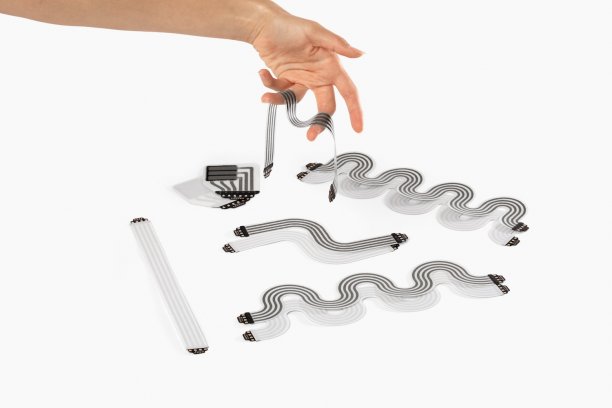
Datacolor launches new colour lifecycle management solutions
Diverse applications for sewable and bondable textile circuits.

2nd September 2024
Innovation in Textiles
|
Brooklyn, NYC
E-textile technology developer Loomia, based in Brooklyn, New York, reports that non-clothing companies have made the biggest investments in its technology to date, with the main sectors being the US Department of Defense (DoD), robotics, medical and automotive.
In addition to the DoD, Loomia has partnerships with Hyundai for automotive interiors, Festo for robotics and Hapbee for smart bedding and the majority of its more than 30 corporate customers are Fortune 500 companies outside the apparel space.
Founded in 2014, Loomia’s aim has been to provide the tools for well-designed and highly functional products merging electronics and soft goods.
The Loomia Electronic Layer (LEL) circuit originated at Autodesk as a conductive ink and deposition solution and over time has morphed into a sewable and bondable solution that can easily integrate into soft goods and is pre-cut, avoiding the risk of damaging the circuit. As a new form of circuitry, it is bringing flexible and creasable electronics to a wide range of industries.
In the automotive industry, for example, comfort and functionality are paramount. Traditional heating systems in vehicles are often bulky and energy-intensive and smart textiles equipped with integrated heating elements powered by Loomia’s technology can offer a more efficient alternative. They provide targeted warmth directly to occupants, reducing energy consumption compared to conventional heating systems. Whether integrated into seats, armrests or steering wheels, smart heating textiles enhance comfort while optimising energy use.
Smart surfaces in automotive interiors also go beyond aesthetics, offering interactive functionalities that improve safety and convenience. Loomia’s smart surfaces can transform mundane surfaces into dynamic interfaces capable of displaying information, adjusting settings and responding to touch or gestures. Smart door panels can illuminate and provide feedback when touched, enhancing both usability and safety during nighttime operation.
Looking ahead, the potential applications of smart textiles in automotive environments are vast. Future developments could include adaptive textiles that respond to environmental conditions, such as adjusting ventilation based on temperature and humidity levels. In addition, advances in sensor technology integrated into smart textiles may enable enhanced vehicle monitoring and diagnostics.

Business intelligence for the fibre, textiles and apparel industries: technologies, innovations, markets, investments, trade policy, sourcing, strategy...
Find out more